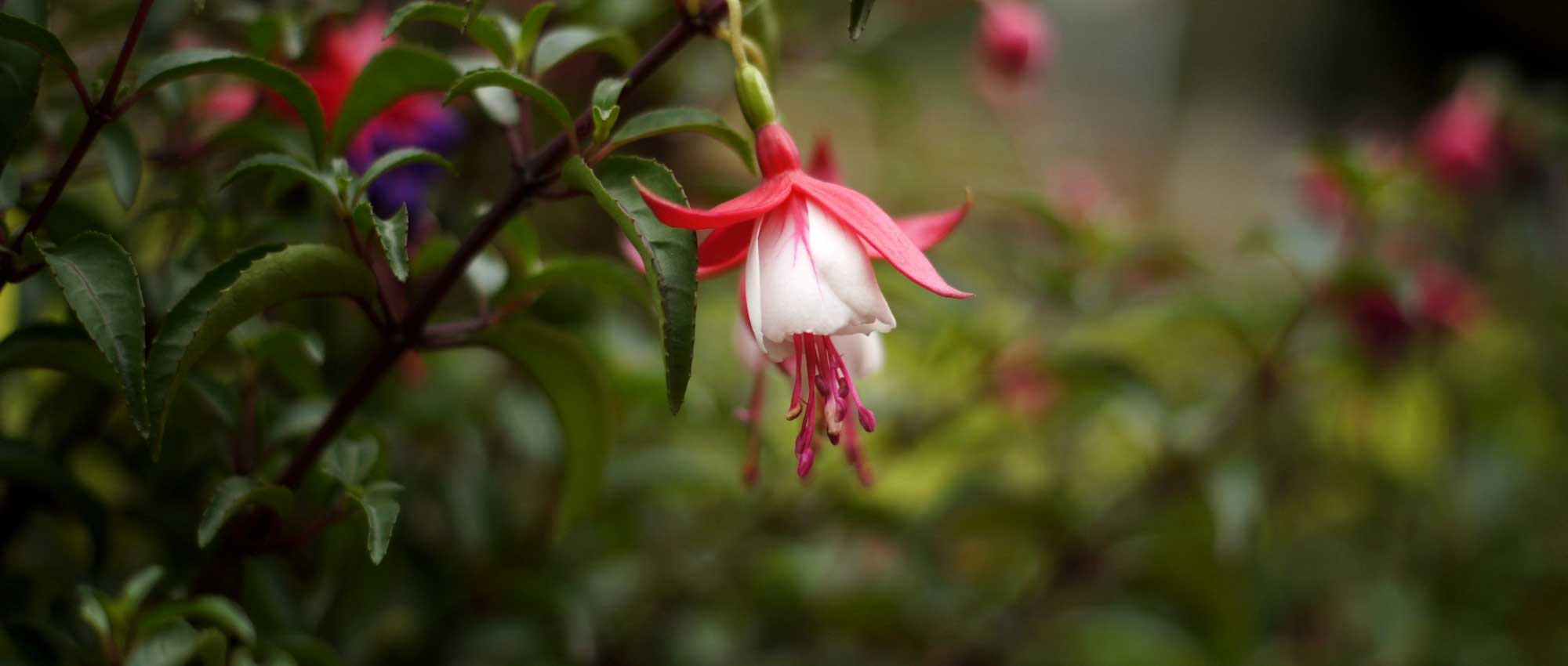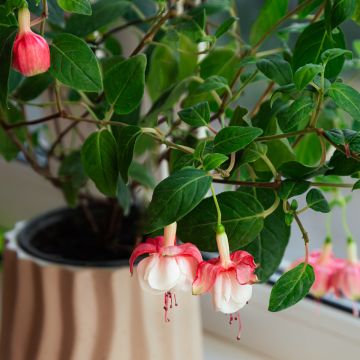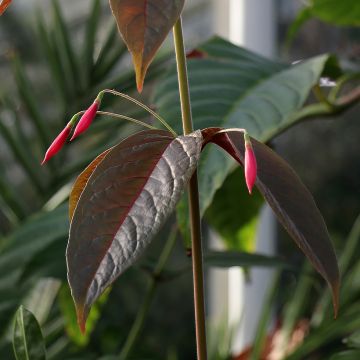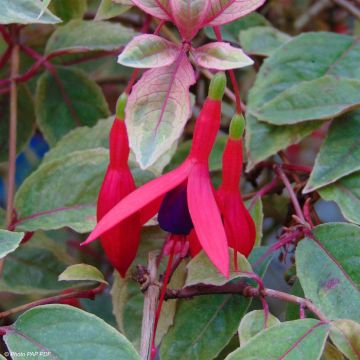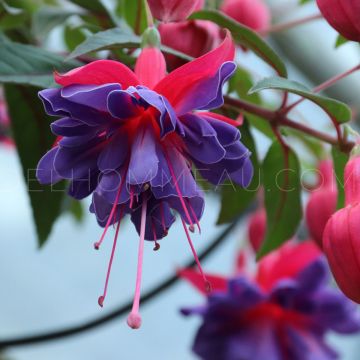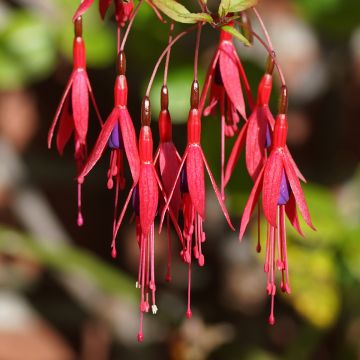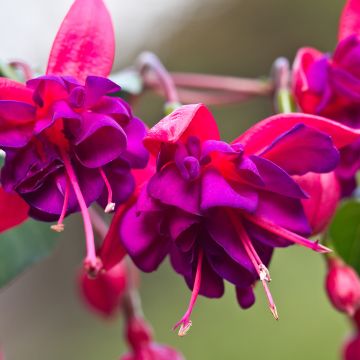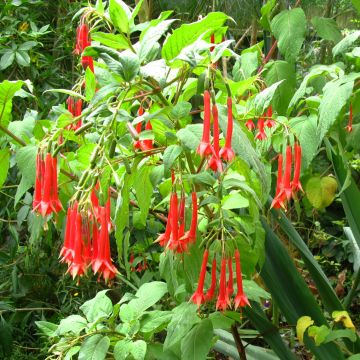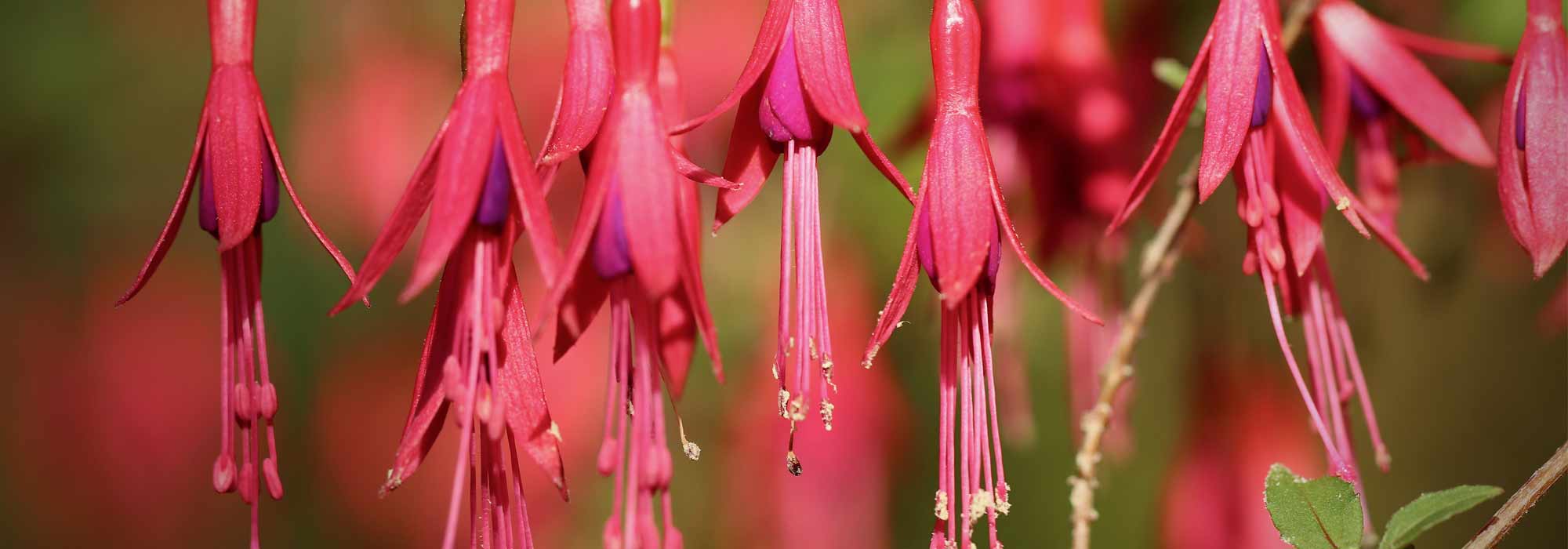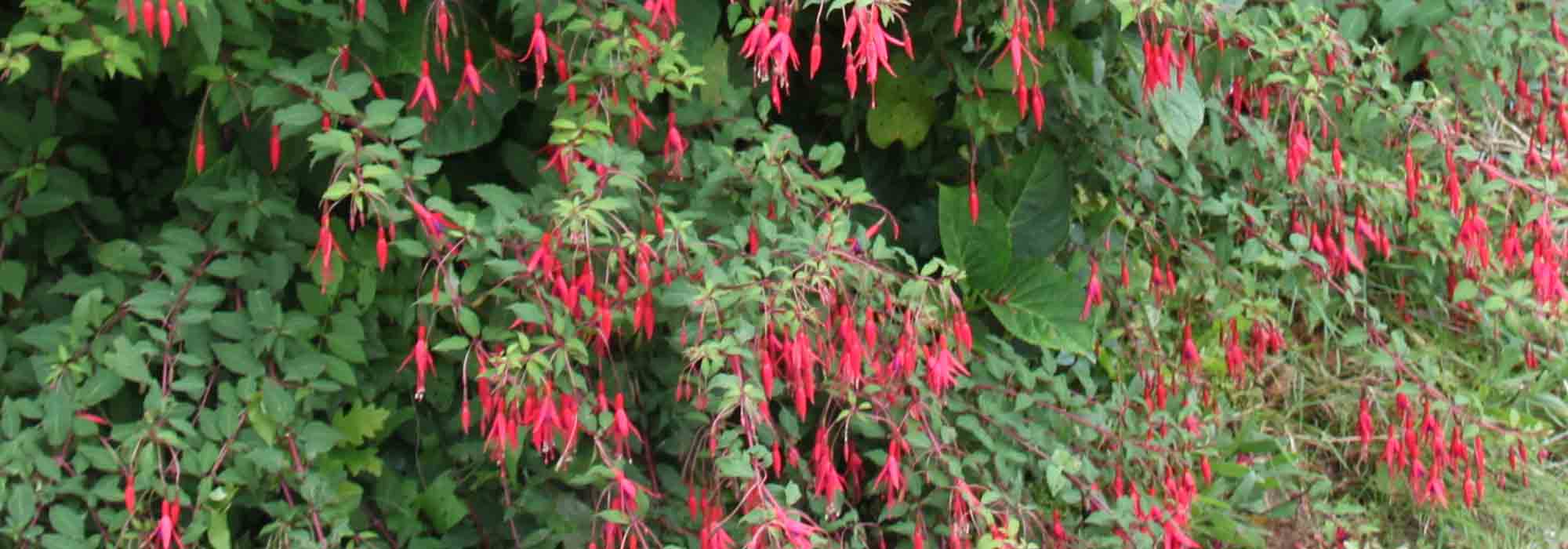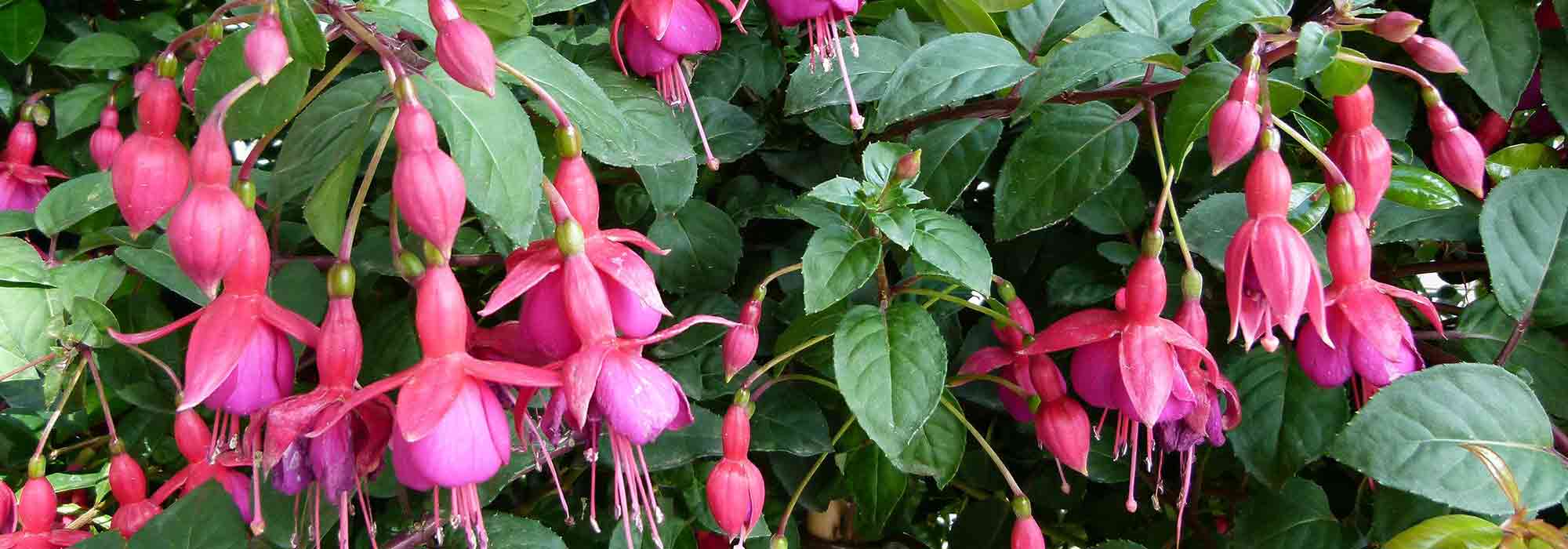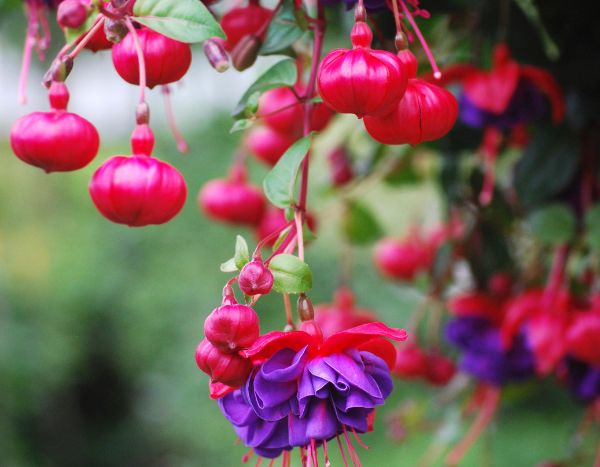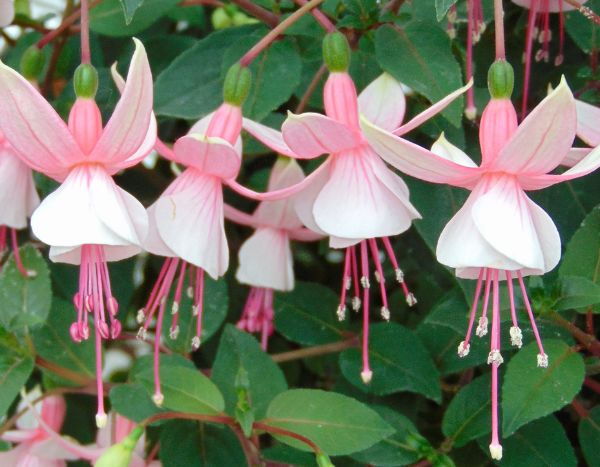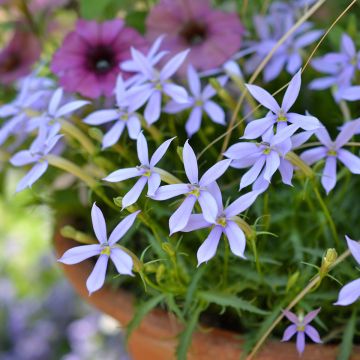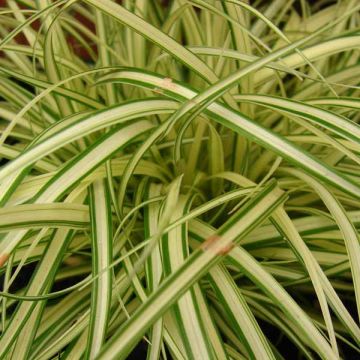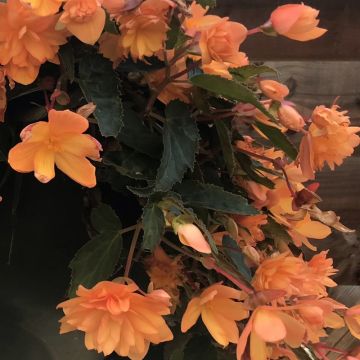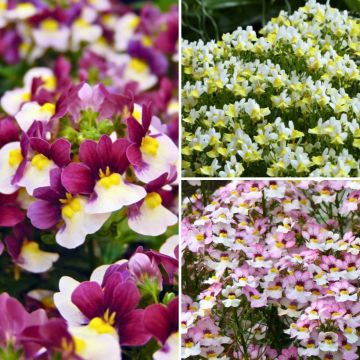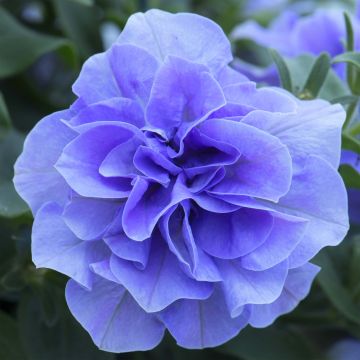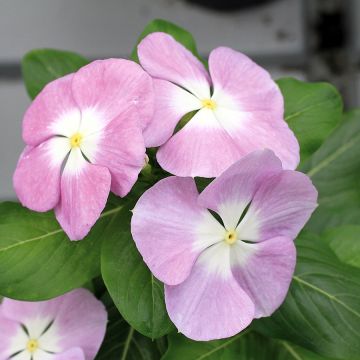

Fuchsia White King
Fuchsia White King
Fuchsia x hybrida White King
Special offer!
Receive a €20 voucher for any order over €90 (excluding delivery costs, credit notes, and plastic-free options)!
1- Add your favorite plants to your cart.
2- Once you have reached €90, confirm your order (you can even choose the delivery date!).
3- As soon as your order is shipped, you will receive an email containing your voucher code, valid for 3 months (90 days).
Your voucher is unique and can only be used once, for any order with a minimum value of €20, excluding delivery costs.
Can be combined with other current offers, non-divisible and non-refundable.
Home or relay delivery (depending on size and destination)
Schedule delivery date,
and select date in basket
This plant carries a 24 months recovery warranty
More information
We guarantee the quality of our plants for a full growing cycle, and will replace at our expense any plant that fails to recover under normal climatic and planting conditions.
Would this plant suit my garden?
Set up your Plantfit profile →
Description
Fuchsia 'White King' offers, from June until the first frost, a cascade of large, double, pendulous flowers. They measure up to 12 cm in diameter and are pure white with a hint of pink on the tips. This bushy perennial with flexible, trailing branches reaches 50 cm in all directions. Plant it in a flowerbed, a hanging basket or a container, in full sun or partial shade, in fertile, moist and well-drained soil. It is a semi-hardy plant that needs protection in regions with cold winters.
From the Onagraceae family, fuchsias are native to South America, the Caribbean and Australia. They were discovered in Santo Domingo in the 17th century and were named after a German botanist named Leonhart Fuchs (1501-1566). Today, there are many hybrid fuchsias, mostly derived from Fuchsia magellanica and Fuchsia fulgens, sometimes with contributions from Fuchsia triphylla, which adds length to the flowers. The 'White King' variety is an American creation by Michael Pennisi in 1968. It stands out with its huge, double, ruffled petals. The tube is white, as is the corolla, and the sepals are white with a hint of pink on the tips. Its large, pendulous bells bloom from June to October, even November. Its leaves are ovate, toothed and dark green. This fuchsia forms an upright bush with flexible branches, perfect for use in a hanging basket.
Hardy down to -7°C, the 'White King' Fuchsia can be grown in the ground in regions with mild winters with winter protection for the crown (mulching and fleece). Elsewhere, it is best grown in a pot or hanging basket and brought indoors in a greenhouse or conservatory during winter. In a partially shaded flowerbed, plant it alongside Hydrangea macrophylla 'Freudenstein' with pink flowers and Hosta 'Almost' with light green, almost golden foliage. Blooming until the first frost, it will create a colourful and bright autumn flowerbed with Sedum 'Autumn Joy' with pink flowers and Japanese Anemone 'Frilly Knickers' with double white flowers.
Fuchsia White King in pictures
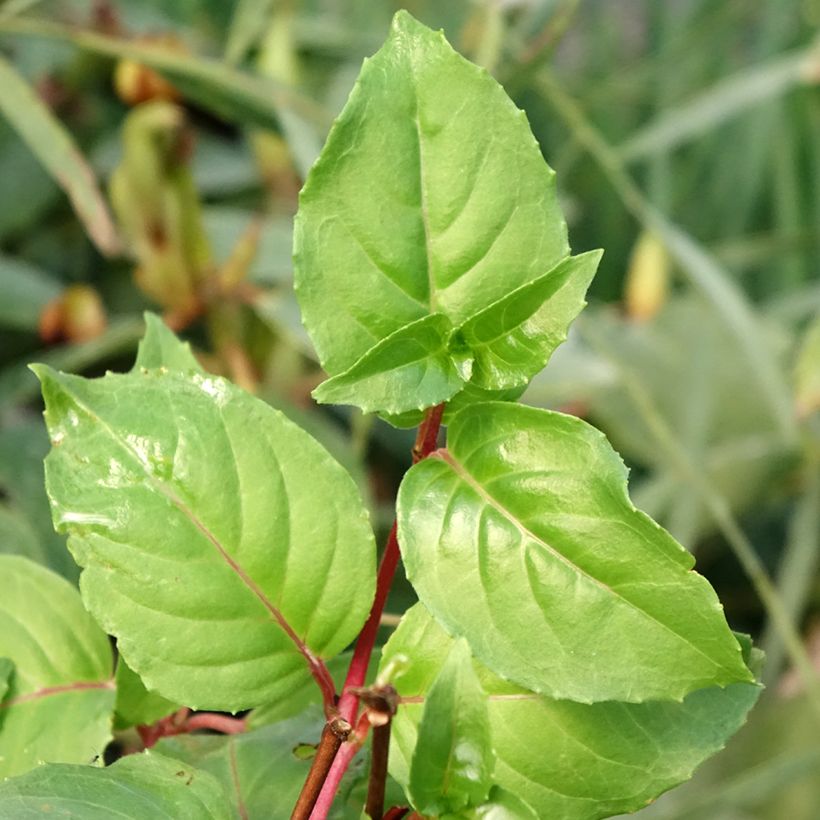

Plant habit
Flowering
Foliage
Botanical data
Fuchsia
x hybrida
White King
Onagraceae
Cultivar or hybrid
Other Fuchsia
View all →Planting and care
Fuchsia 'White King' appreciates rich, moist and well-drained soils. Place it in a sunny (not scorching) or partially shaded location. It needs light to flower well but doesn't like full summer sun. Water regularly, but not excessively, as fuchsias are sensitive to drought. Apply liquid fertilizer for fuchsias every 15 days during the growing season. If you have planted your fuchsia in a pot, be sure not to leave any water in the saucer. Remove faded flowers and dry leaves as they appear.
After flowering (in autumn), cut back your fuchsia to 15 cm from the ground. It will sprout again from the crown the following spring. Apply a thick layer of dead leaves or fern fronds as mulch and wrap it all with fleece. This will help your fuchsia survive winter.
Planting period
Intended location
Care
Planting & care advice
This item has not been reviewed yet - be the first to leave a review about it.
Similar products
Haven't found what you were looking for?
Hardiness is the lowest winter temperature a plant can endure without suffering serious damage or even dying. However, hardiness is affected by location (a sheltered area, such as a patio), protection (winter cover) and soil type (hardiness is improved by well-drained soil).

Photo Sharing Terms & Conditions
In order to encourage gardeners to interact and share their experiences, Promesse de fleurs offers various media enabling content to be uploaded onto its Site - in particular via the ‘Photo sharing’ module.
The User agrees to refrain from:
- Posting any content that is illegal, prejudicial, insulting, racist, inciteful to hatred, revisionist, contrary to public decency, that infringes on privacy or on the privacy rights of third parties, in particular the publicity rights of persons and goods, intellectual property rights, or the right to privacy.
- Submitting content on behalf of a third party;
- Impersonate the identity of a third party and/or publish any personal information about a third party;
In general, the User undertakes to refrain from any unethical behaviour.
All Content (in particular text, comments, files, images, photos, videos, creative works, etc.), which may be subject to property or intellectual property rights, image or other private rights, shall remain the property of the User, subject to the limited rights granted by the terms of the licence granted by Promesse de fleurs as stated below. Users are at liberty to publish or not to publish such Content on the Site, notably via the ‘Photo Sharing’ facility, and accept that this Content shall be made public and freely accessible, notably on the Internet.
Users further acknowledge, undertake to have ,and guarantee that they hold all necessary rights and permissions to publish such material on the Site, in particular with regard to the legislation in force pertaining to any privacy, property, intellectual property, image, or contractual rights, or rights of any other nature. By publishing such Content on the Site, Users acknowledge accepting full liability as publishers of the Content within the meaning of the law, and grant Promesse de fleurs, free of charge, an inclusive, worldwide licence for the said Content for the entire duration of its publication, including all reproduction, representation, up/downloading, displaying, performing, transmission, and storage rights.
Users also grant permission for their name to be linked to the Content and accept that this link may not always be made available.
By engaging in posting material, Users consent to their Content becoming automatically accessible on the Internet, in particular on other sites and/or blogs and/or web pages of the Promesse de fleurs site, including in particular social pages and the Promesse de fleurs catalogue.
Users may secure the removal of entrusted content free of charge by issuing a simple request via our contact form.
The flowering period indicated on our website applies to countries and regions located in USDA zone 8 (France, the United Kingdom, Ireland, the Netherlands, etc.)
It will vary according to where you live:
- In zones 9 to 10 (Italy, Spain, Greece, etc.), flowering will occur about 2 to 4 weeks earlier.
- In zones 6 to 7 (Germany, Poland, Slovenia, and lower mountainous regions), flowering will be delayed by 2 to 3 weeks.
- In zone 5 (Central Europe, Scandinavia), blooming will be delayed by 3 to 5 weeks.
In temperate climates, pruning of spring-flowering shrubs (forsythia, spireas, etc.) should be done just after flowering.
Pruning of summer-flowering shrubs (Indian Lilac, Perovskia, etc.) can be done in winter or spring.
In cold regions as well as with frost-sensitive plants, avoid pruning too early when severe frosts may still occur.
The planting period indicated on our website applies to countries and regions located in USDA zone 8 (France, United Kingdom, Ireland, Netherlands).
It will vary according to where you live:
- In Mediterranean zones (Marseille, Madrid, Milan, etc.), autumn and winter are the best planting periods.
- In continental zones (Strasbourg, Munich, Vienna, etc.), delay planting by 2 to 3 weeks in spring and bring it forward by 2 to 4 weeks in autumn.
- In mountainous regions (the Alps, Pyrenees, Carpathians, etc.), it is best to plant in late spring (May-June) or late summer (August-September).
The harvesting period indicated on our website applies to countries and regions in USDA zone 8 (France, England, Ireland, the Netherlands).
In colder areas (Scandinavia, Poland, Austria...) fruit and vegetable harvests are likely to be delayed by 3-4 weeks.
In warmer areas (Italy, Spain, Greece, etc.), harvesting will probably take place earlier, depending on weather conditions.
The sowing periods indicated on our website apply to countries and regions within USDA Zone 8 (France, UK, Ireland, Netherlands).
In colder areas (Scandinavia, Poland, Austria...), delay any outdoor sowing by 3-4 weeks, or sow under glass.
In warmer climes (Italy, Spain, Greece, etc.), bring outdoor sowing forward by a few weeks.






























